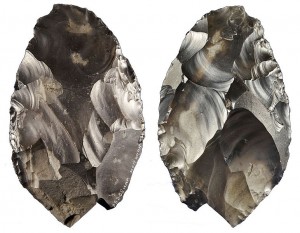
Handaxe
The most distinctive stone tools in deep-human-history are the handaxes. The oldest are almost two million years old from East Africa. They are exceptional because of their symmetry and
their consistency in design. Handaxes are found from Britain to South Africa and from West Africa to India. They persisted for over a million and a half years at a time when the brains of our ancestors were expanding rapidly. They served a multitude of tasks in a multitude of environments.
Continue reading →

